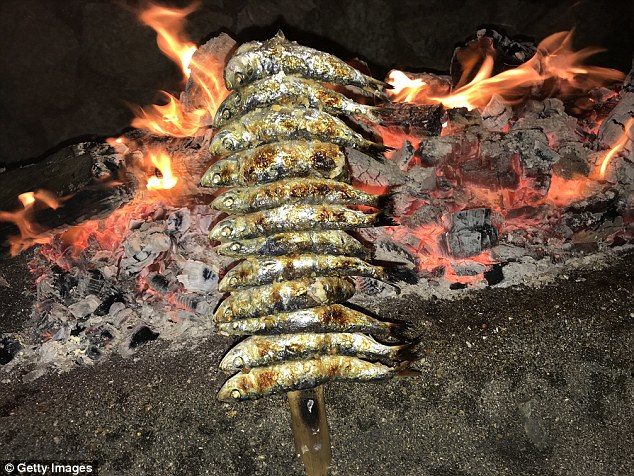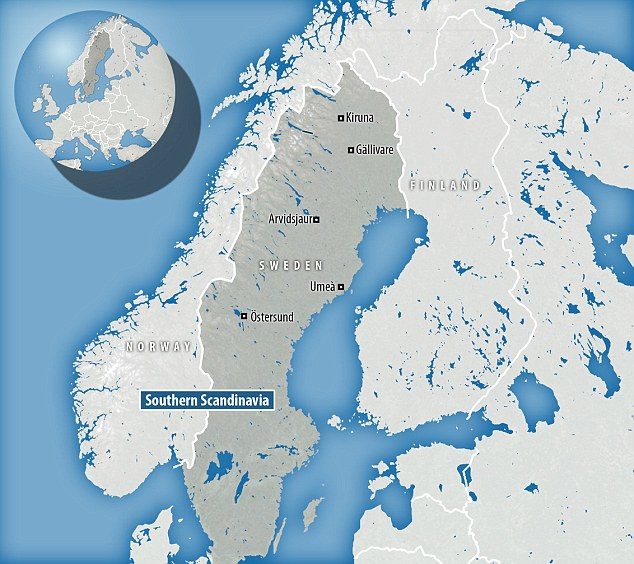
Researchers from Sweden's Lund University studied human bones that are thousands of years old for a new study on the diets of Stone Age individuals.
Previously, scientists thought that these people depended largely on land mammals for food.
But, while they did eat some mammals, the researchers found that more than half of what they consumed was fish, emphasizing the importance of fishing to prehistoric Scandinavian people.
The report came out of an ongoing project managed by osteologists Torbjörn Ahlström and Adam Boethius, who are studying the roles that various protein sources played in the diets of people living 10,500 to 7,500 years ago.
Lund University's report is part of a doctoral thesis focusing on the importance of fishing for settlers in southern Scandinavia following the last ice age.
The researchers used the remains of Sweden and Denmark's 82 oldest humans for the new report.
They combined chemical analyses of the individuals' bones with osteological analyses of bone material from animals for the study.
Boethius said that the researchers discovered that fish were elemental to the inhabitants examined for the study.
'At the Norje Sunnansund settlement outside Sölvesborg in Sweden you can see that just over half of the protein intake has come from fish, 10 percent from seals, and around 37 percent from land mammals - such as wild boar and red deer - and scarcely three percent from plants such as mushrooms, berries and nuts,' Boethius said.
He continued: 'On the island of Gotland, which did not have any land mammals apart from hares, the percentage of fish in total protein consumption was even higher at just under 60 percent.
'Here, seals have replaced the land mammals and account for almost 40 percent of the protein intake, whereas hares and vegetables account for a negligible proportion.'
Comment: Rabbits (like hares) are notoriously low in fat so this stone age society needed alternative sources of saturated fat, which is probably why they chose to eat seal since it's high in fat: Why Humans Crave Fat
People who eat too much lean protein and not enough fat end up in a situation called "rabbit starvation" or "mal de caribou".
Therefore, in order to survive on hunted meat, Paleolithic humans had to get the rest of their calories from something besides protein.
The researchers learned that the first pioneers in the area focused on hunting aquatic mammals, such as dolphins and seals, before turning to fishing as a way to find protein.
Before now scientists thought land mammals were much more essential to the inhabitants' diets.

The report said that one reason for the misunderstanding comes down to the frailty of fish bones.
These bones are smaller and weaker than mammal bones, and they are not preserved as well as those of other animals.
Additionally, fish bones are nearly impossible to find during an excavation; scientists have to use fine-mesh sieves to detect them.
The researchers divided up the remains studied for the report into two categories: those that came from individuals who lived in marine environments and those from individuals who lived in freshwater environments.
The report said: 'In freshwater environments the protein intake is dominated by different types of carp fish species, perch, pike and burbot.
'Cod dominates in marine environments, but herring, saithe, haddock, spiny dogfish and plaice are also important species.
'On the other hand, migratory fish, such as eel and salmon, did not account for a large proportion of food intake.'
Comment: It wasn't only fish either, there's strong evidence that Stone Age hunters brought home the bacon
The surprising results proved that the people's dependence on fish developed over time.
Boethius said: 'The dominance of fishing is a discovery that has an enormous significance for our understanding of how people lived.
'Fishing is relatively stationary compared to the hunting of land mammals, which provides clear indications that settlements appeared in Scandinavia much earlier than researchers previously believed.'
He also said that fishing could have incited violence among different groups of settlers because, while people could have fished in most any lake, certain areas were more preferable than others.
Boethius concluded: 'The increasing importance of fish means that the land was divided up. For groups that continued to be mobile this meant the creation of no-go zones, that these groups were forced to skirt around in order to find food.
'In the long term this leads to increasing "costs" for foraging strategies and an increasing tendency to settle is to be expected, as it becomes the best alternative.'
Comment: It's notable the researcher provides no hard evidence for why he thinks this society would be involved in conflict over resources: Evidence of peaceful prehistoric Japanese hunter-gatherers shows violence and warfare were uncommon
HOW DO RESEARCHERS DETERMINE ANCIENT DIETS?
They reached this conclusion by studying the bones of 82 individuals who lived thousands of years ago.
The researchers employed Bayesian statistical modeling to learn about human diets following the melting of ice from the last ice age.
In addition to looking at human bones the scientists examined animal bone material in order to 'gain an insight into how diets vary between different places', the study said.
The report states that fish were essential for people living in territories both coastal and inland.
The analysis explains: 'The results show that the water's resources dominated protein intake in both marine and fresh water environments.
'The results also show there are considerable local variations in the preferred species but that fishing has been highly significant for human subsistence, and the significance of fishing appears to constantly increase.'



Comment: As noted above, we have to bear in mind the climate of the area and the era. In an area near the coast or that's too cold to sustain land mammals, it makes sense they would feast on sea mammals particularly since, as evidenced by their choices, they seem to have understood how vital saturated fat is in order to remain healthy - like the Inuit nowadays - even more if we consider that they've just left an ice age, with the landscape and food choices they will have had access too.